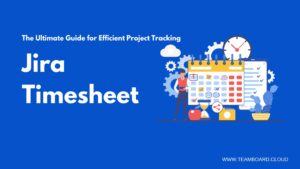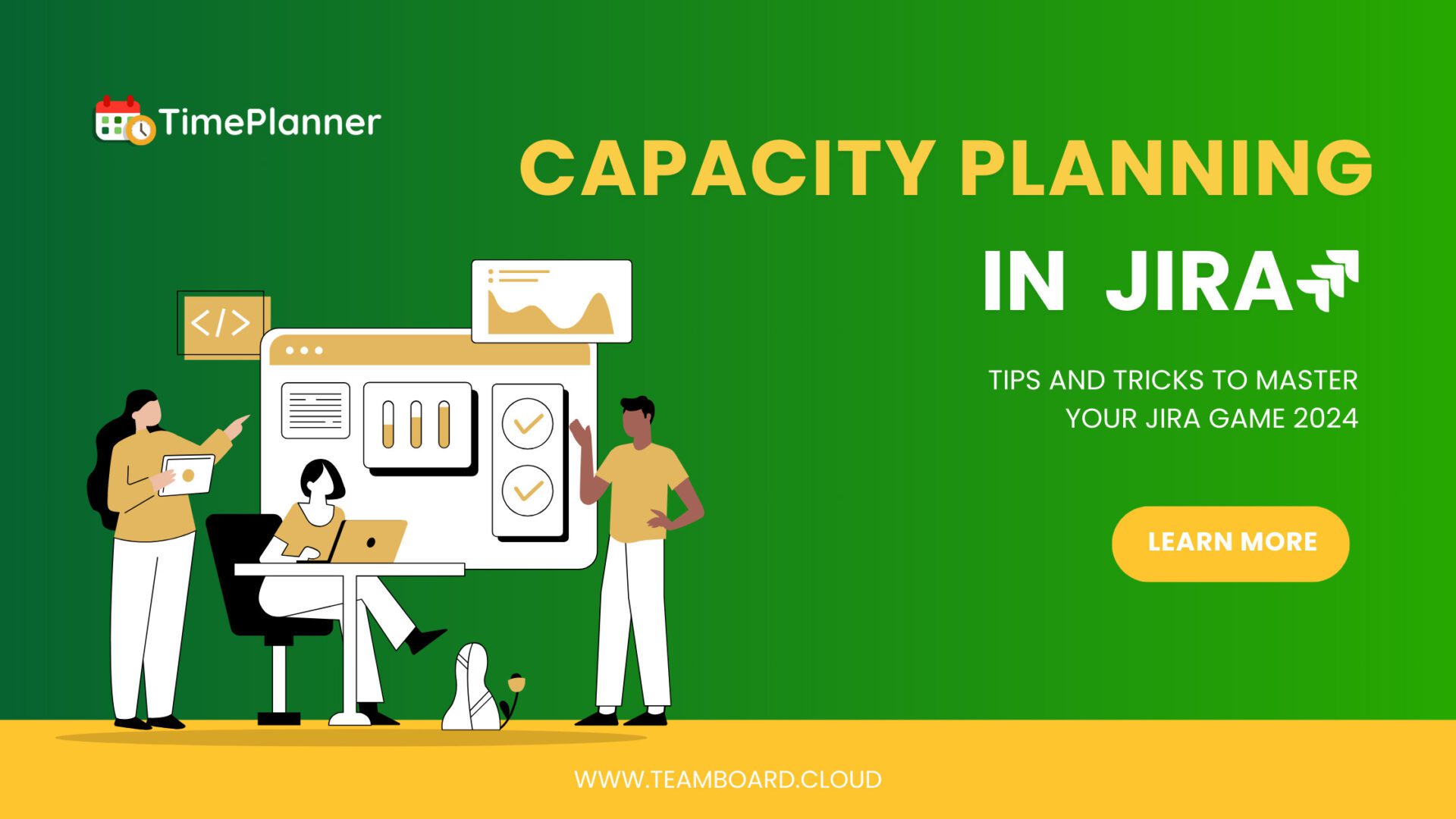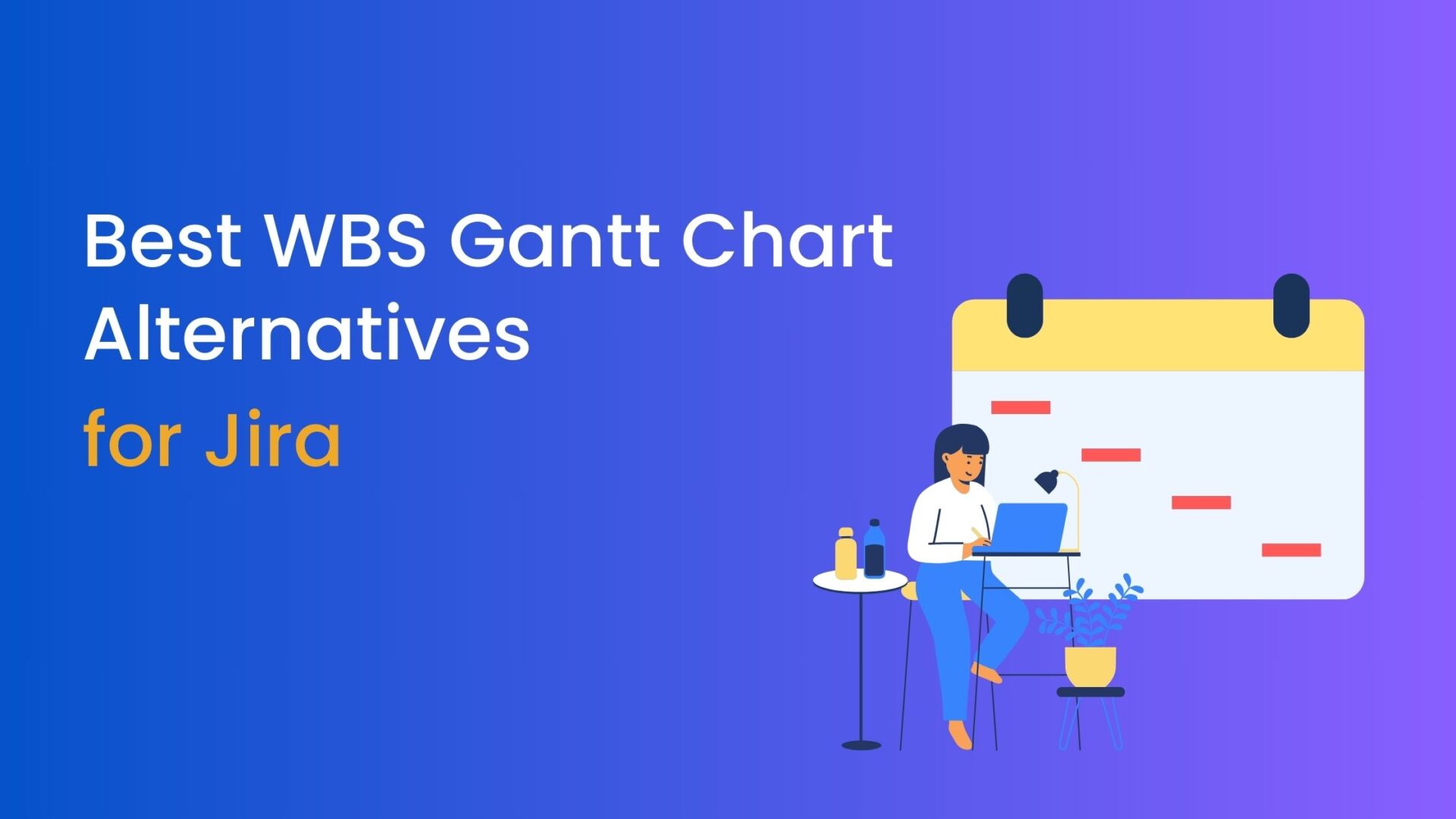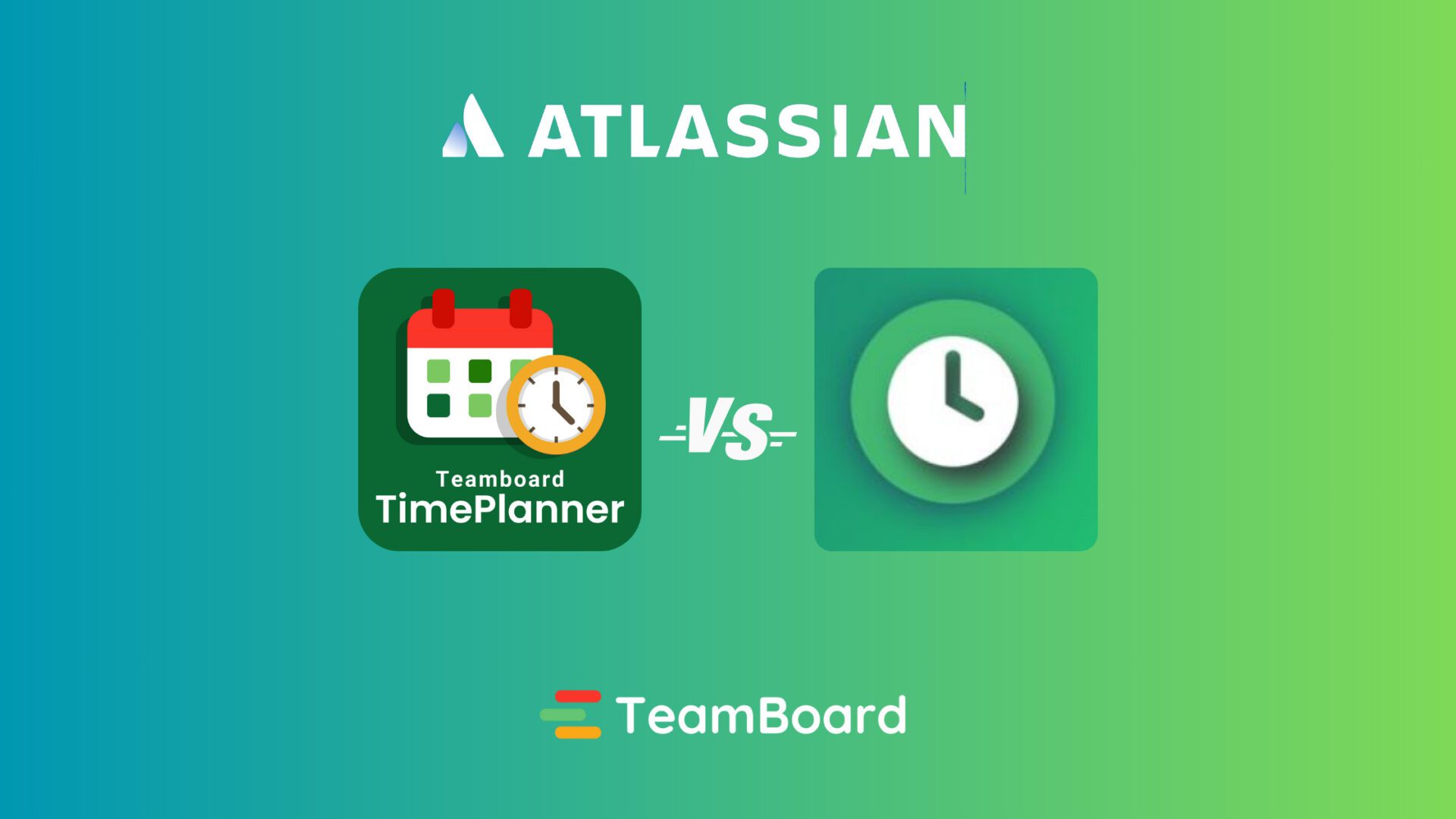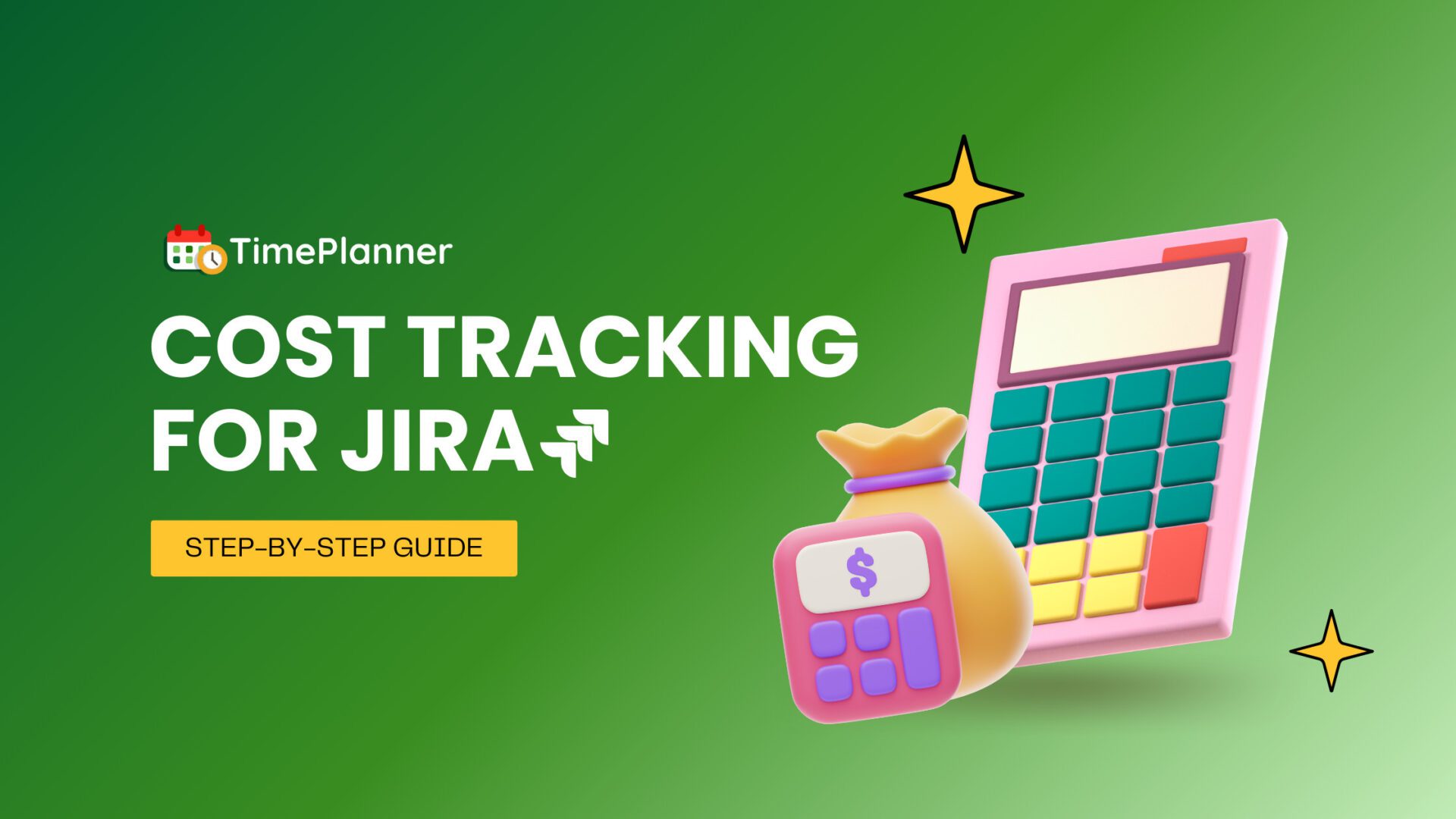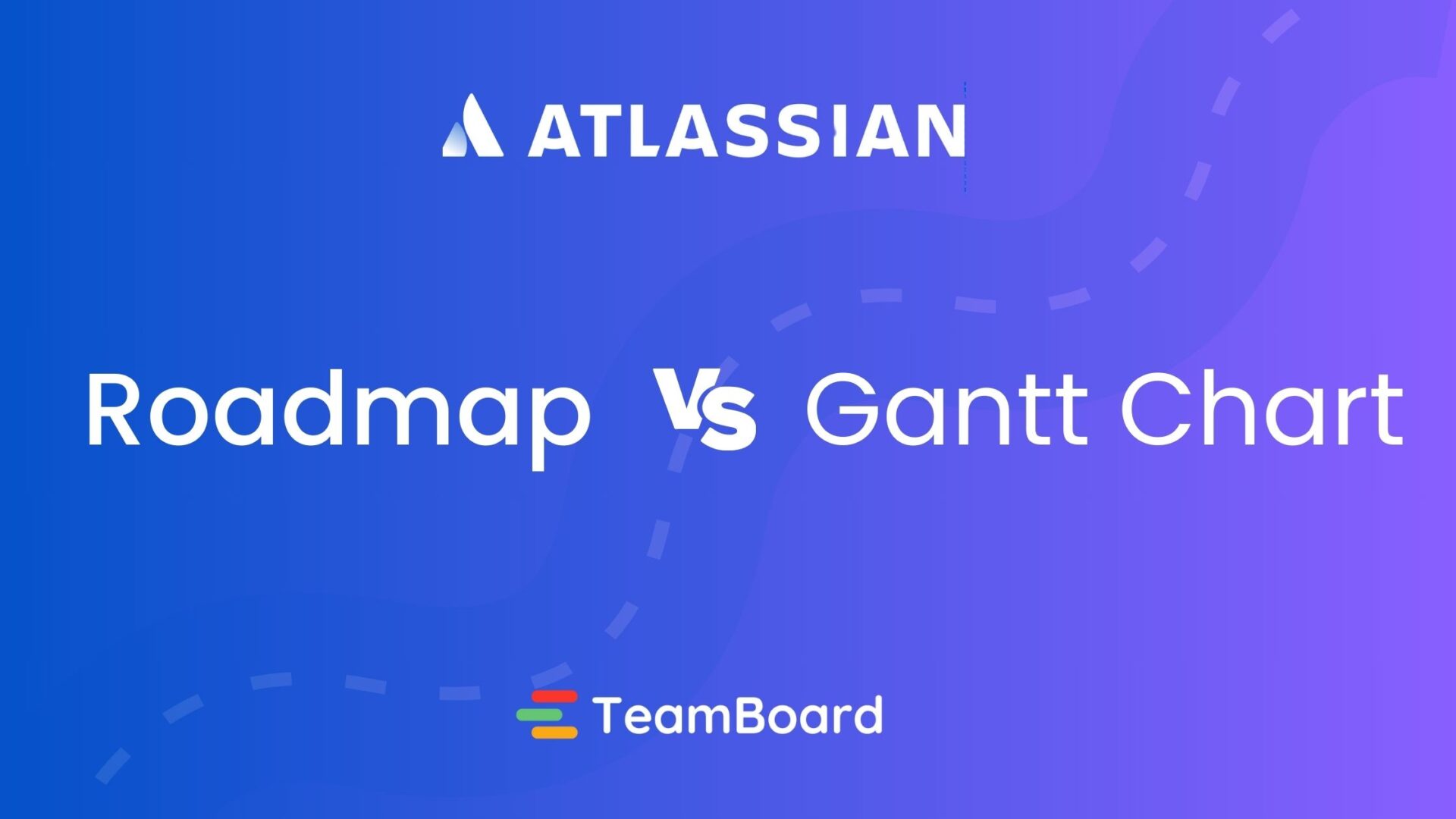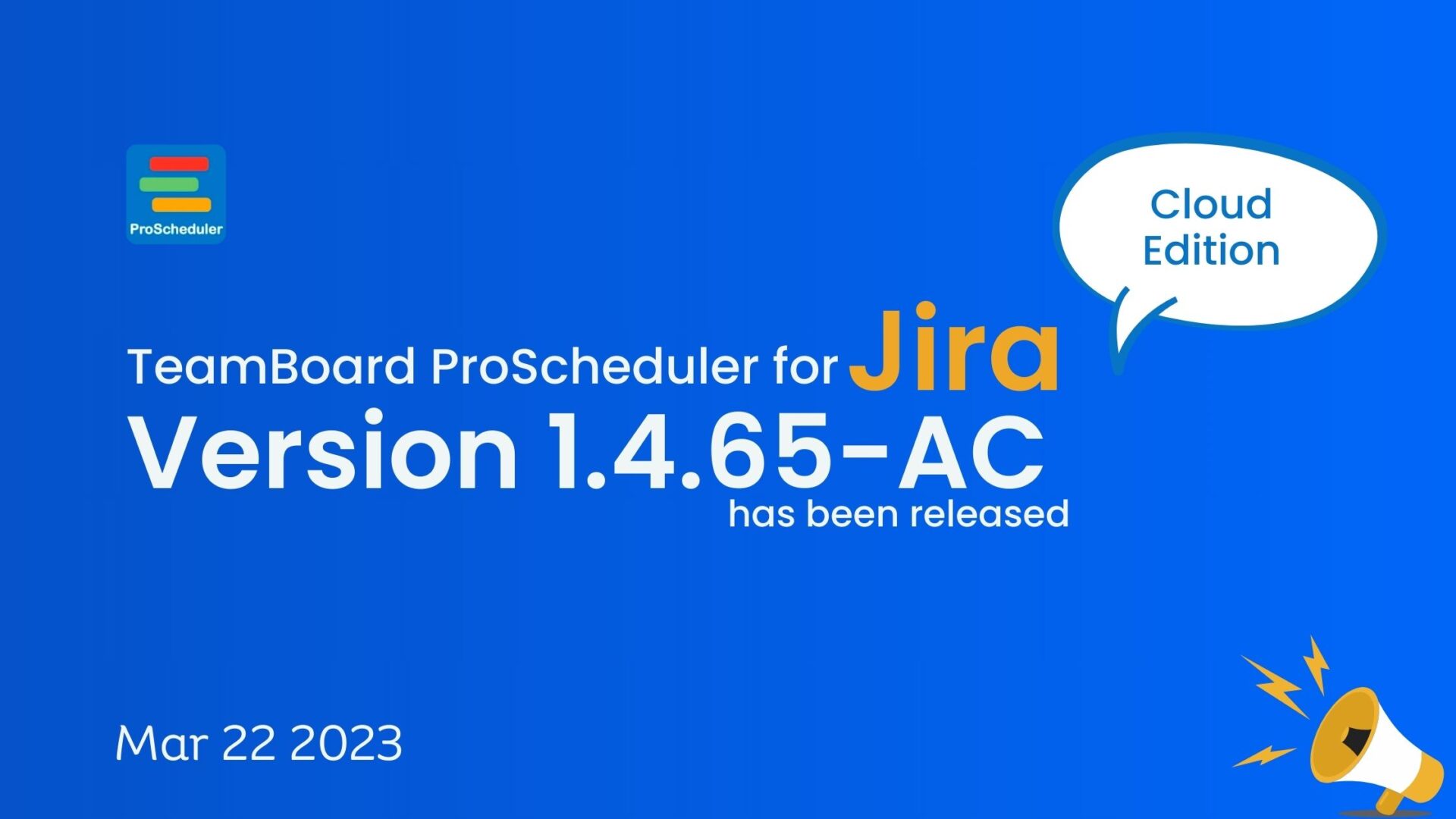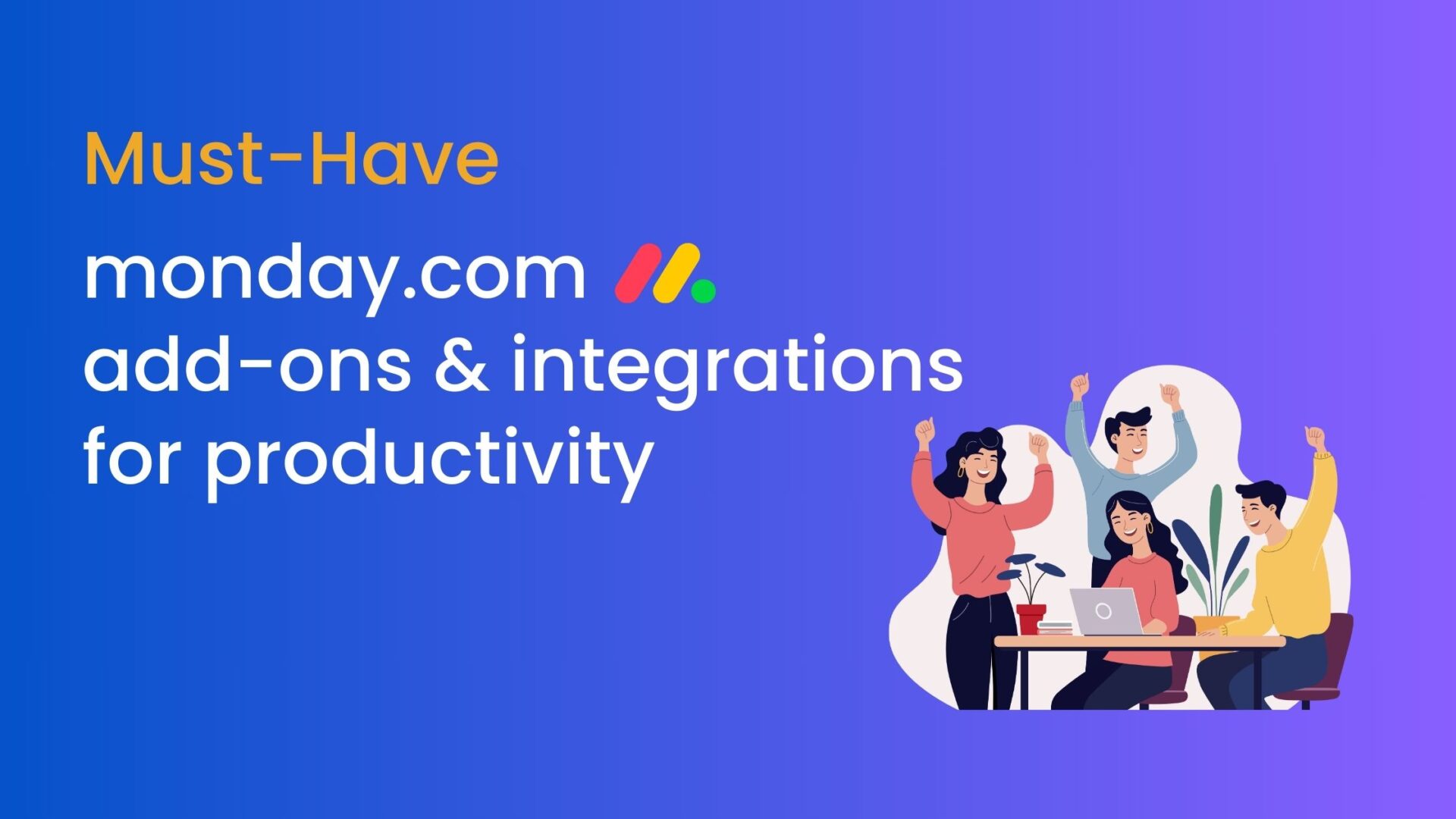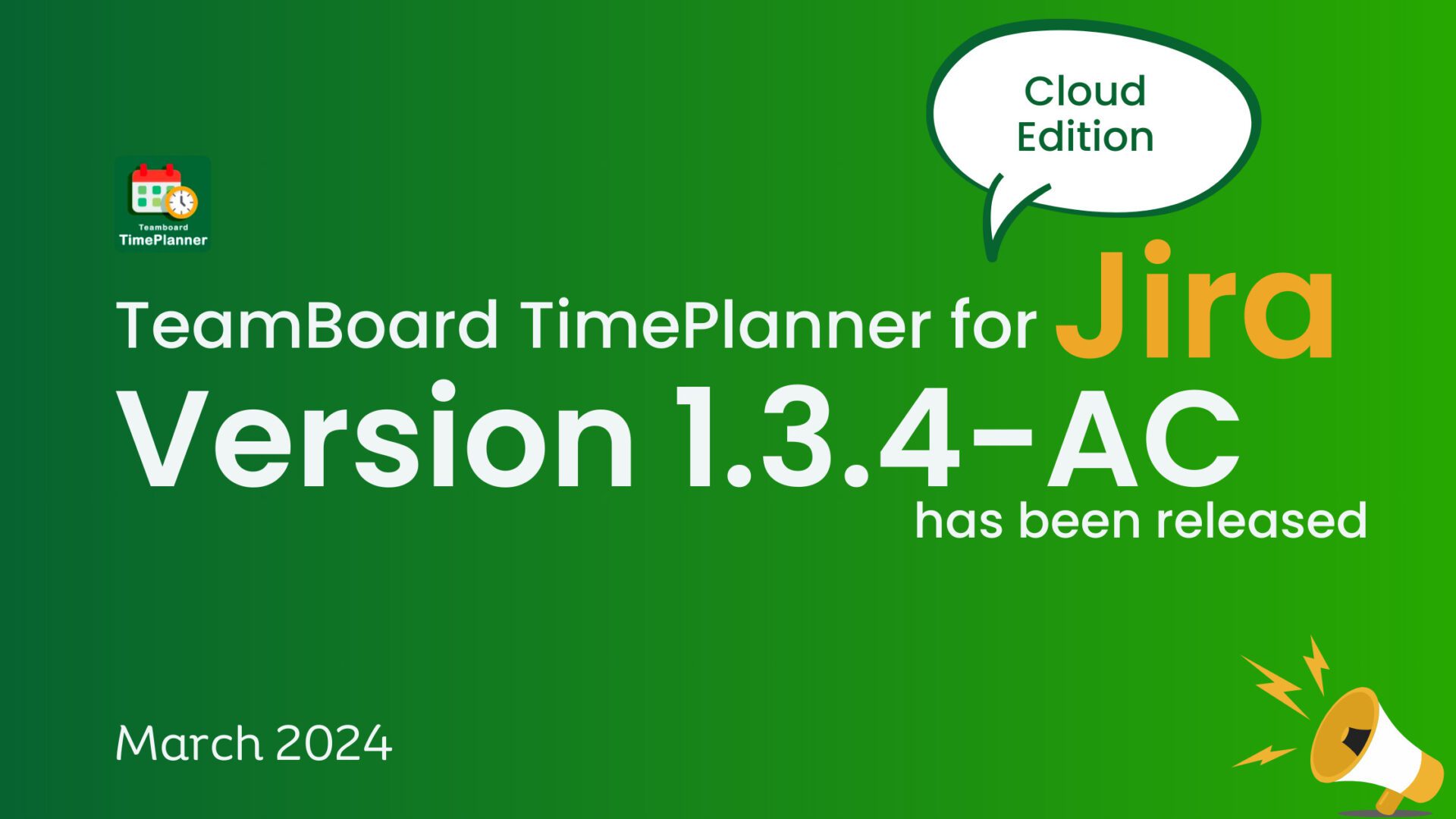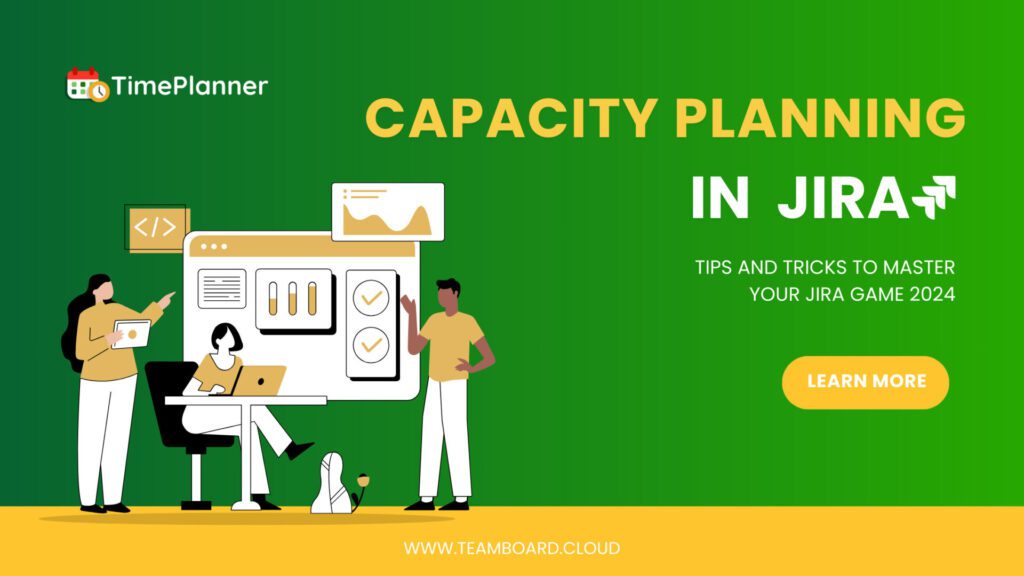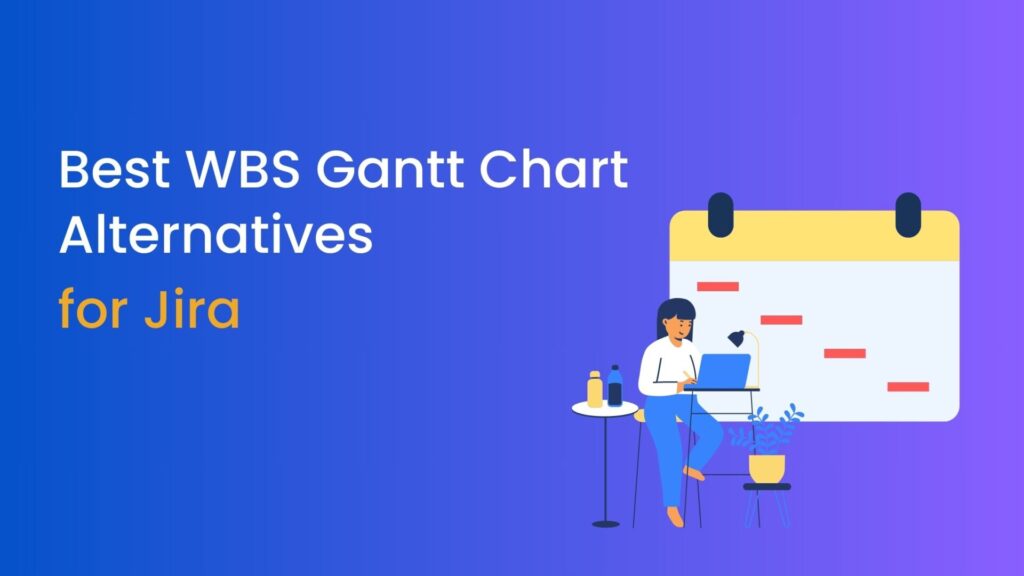Have you ever found yourself wondering how massive projects, like constructing skyscrapers or launching new software, stay organized and on track? The answer lies in the art and science of “Resource Planning in Project Management.” Just as a chef needs the right ingredients in precise amounts to create a culinary masterpiece, project managers need the right resources at the right times to ensure projects run smoothly.
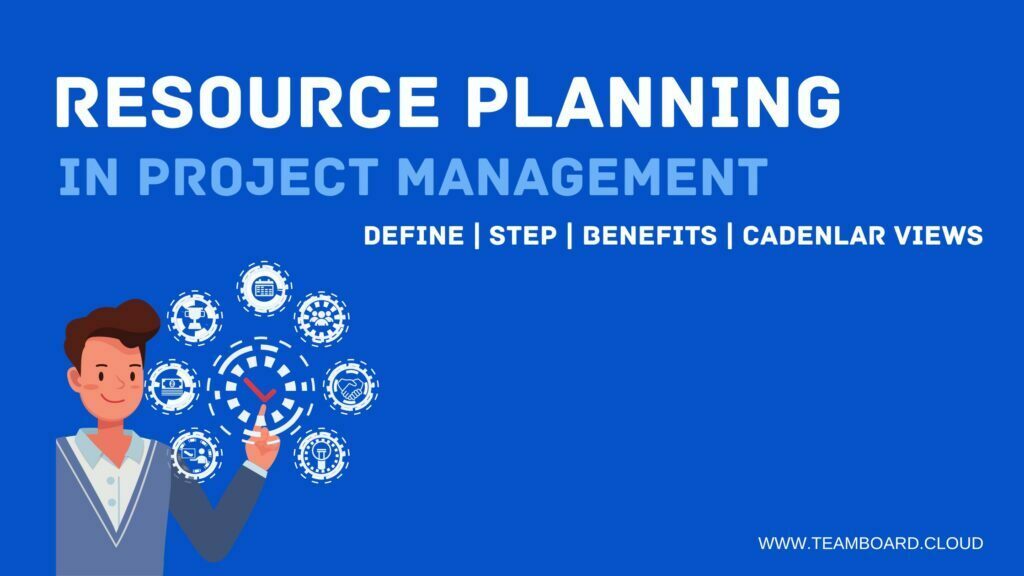
Diving into this topic might seem daunting, but don’t worry! In this guide, we break it down into digestible bits, making it easy for everyone, from novices to experts, to grasp. Resource planning might just be the secret ingredient to turning your projects from chaotic to charismatic. Curious yet? Let’s jump right in!
Table of Contents
- What is resource planning and why it is important?
- What is resource planning in project management?
- What happens when you don’t plan resources?
- What are the stages of resource planning?
- Benefits of Calendar Views for Resource Planning
- How to create a resource plan
- 5 key Features of an agile resource planning tool
- Recommended Tool: TeamBoard
- Conclusion
What is resource planning and why it is important?
Imagine building a sophisticated web or mobile application. Each developer, whether they’re focusing on the frontend design or the backend infrastructure, plays a critical role. But without a clear blueprint or development plan, the result might be a glitchy application with redundant features. In the world of project management, resource planning is that vital blueprint.
Resource planning is the process of identifying, organizing, and allocating the necessary tools, expertise, and finances to ensure a project progresses smoothly. It’s about making sure you have the right resources, in the right quantities, at precisely the right stages. Think of it as the detailed mockup that an app designer uses before the developers start coding. Without this mockup or wireframe, even the most seasoned developer might veer off course, leading to a less-than-optimal app.
So, why is this so pivotal? Resource planning:
Ensures Efficiency: Just as a mockup ensures an app designer doesn’t clutter the interface, resource planning guarantees projects don’t squander time, funds, or expertise.
Provides Clarity and Direction: Every developer, similar to a musician in an orchestra, has a specific part to play. With an effective resource plan, every developer, tester, and designer knows their tasks, deadlines, and deliverables.
Prevents Redundancies or Gaps: Just as an application can’t have redundant features or missing key functionalities, a project can’t afford to allocate resources to one module overall while neglecting another.
What is resource planning in project management?
Taking our app development analogy further, consider the role of the lead developer or project manager. They don’t just look at the mockup or development blueprint, they actively direct each developer, guiding the coding sequences and ensuring that every module integrates seamlessly. In the sphere of project management, this direction is akin to resource planning.
It’s about recognizing what tools and skills are at your disposal, be it software frameworks, developers, testers, or time. Assigning these resources to specific modules or features within the app. Ensuring resources are synchronized, so that backend infrastructure is ready when frontend development begins, guaranteeing no module is delayed or colliding with another.
The lead developer ensures that the backend doesn’t become a bottleneck for the front end, just as a conductor ensures each instrument plays at the right moment. In essence, resource planning is the lead developer’s strategy in the intricate process of app development, ensuring that every component works in perfect unison.
This approach contextualizes resource planning within the familiar setting of app development while preserving the essence of the analogy.
“Let our advance worrying become advance thinking and planning.” ~ Winston Churchill.
What happens when you don’t plan resources?
Venturing into the realm of app development, imagine tasking a team to create a cutting-edge application without giving them a clear blueprint. The frontend developer, eager to show the app’s design, initiates it even before the backend is prepared. Meanwhile, the database engineer, unsure of where and how to start, hesitates to implement the right structures, and somewhere in the confusion, a UX designer seems to be crafting features not aligned with the app’s core functionality. The result? Not the streamlined, user-friendly app you anticipated, but a disjointed digital maze.
This disarray in the tech realm mirrors the chaos that can arise in project management when resources aren’t properly planned. Features might be developed that don’t seamlessly integrate, reminiscent of our front end starting prematurely. Valuable resources, like coders or specific software tools, might lie dormant, evoking that front-end developer waiting for backend integrations. And just as our UX designer’s misguided features can confuse users, teams working without a synced vision can lead to redundant modules and wasted time.
But the implications extend further. In our app analogy, a development team working without a clear strategy might not only contend with misaligned modules but could also find themselves grappling with unforeseen bugs, leading to extended debugging sessions and spiraling costs. Similarly, in any project landscape, diving in without precise resource planning can spawn unexpected challenges, catapulting expenses beyond initial estimates.
Lastly, it’s all about the end product. The primary goal of an app development team isn’t just to produce an app, it’s to deliver an exceptional user experience. Similarly, project management that lacks thorough resource planning might culminate in a deliverable that falls short of its envisioned potential, leaving users underwhelmed and stakeholders questioning the ROI.
What are the stages of resource planning?
Delving deeper into the realm of app development, constructing a seamless application isn’t merely about having developers and the right tools. It’s about a meticulous process that guarantees every line of code integrates, every function operates efficiently, and every developer knows their role. Similarly, resource planning in project management isn’t a simple checkbox activity, it’s a series of stages, each vital to the outcome.
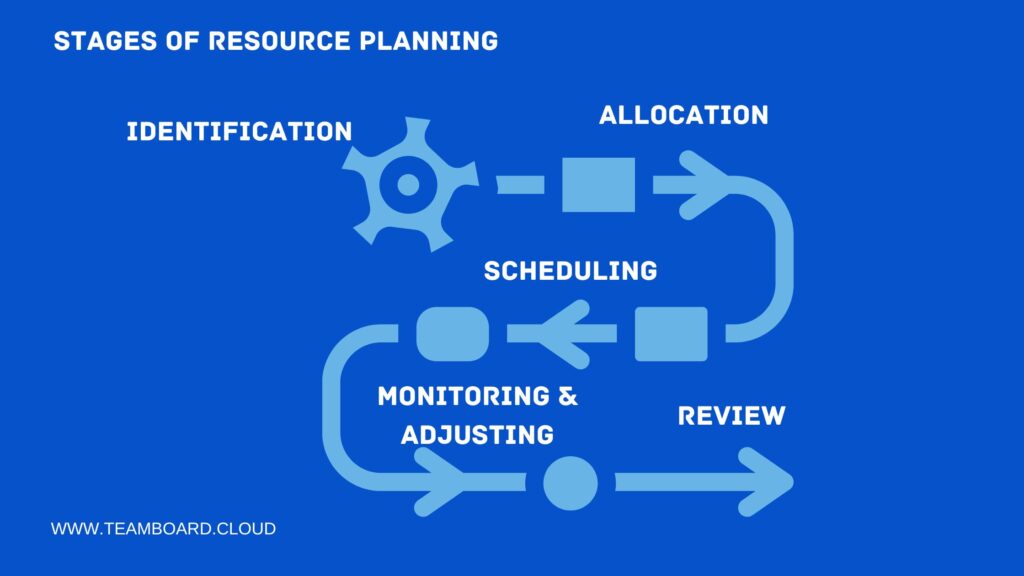
Identification
Just as a lead developer must be aware of each team member’s expertise – be it in UI design, backend development, or quality testing – the initial step in resource planning involves pinpointing available resources. This encompasses everything from skilled developers to software tools, allocated timeframes, and budgets.
Allocation
Armed with the knowledge of the team’s strengths, the lead assigns specific tasks to developers based on their expertise. In the broader spectrum of project management, this means matching identified resources to specific parts of the project, ensuring a seamless fit for every demand.
Scheduling
Determining the sequence in which modules of the app are developed and integrated is essential. Just as a game-level designer would need to plan when each challenge or reward appears, project managers schedule resources. This ensures effective utilization throughout the project, minimizing idle periods and guaranteeing that milestones are met.
Monitoring & Adjusting
Even amidst the coding frenzy, a project manager, like a diligent debugger, is always on the lookout, ready to adjust tasks or reallocate resources based on emerging needs. Should there be any bottlenecks, or if certain resources are underutilized, swift actions are taken to maintain the project’s momentum.
Review
After the application is live and users begin their digital exploration, it’s imperative to analyze the development process, identifying what went right and what could have been better. Similarly, post-project, it’s crucial to assess the efficacy of resource planning, drawing insights for subsequent undertakings.
In the intricate dance of app development, each phase of resource planning ensures the software’s fluid evolution, much like a developer ensuring every function, feature, and integration is precisely calibrated.
Benefits of Calendar Views for Resource Planning
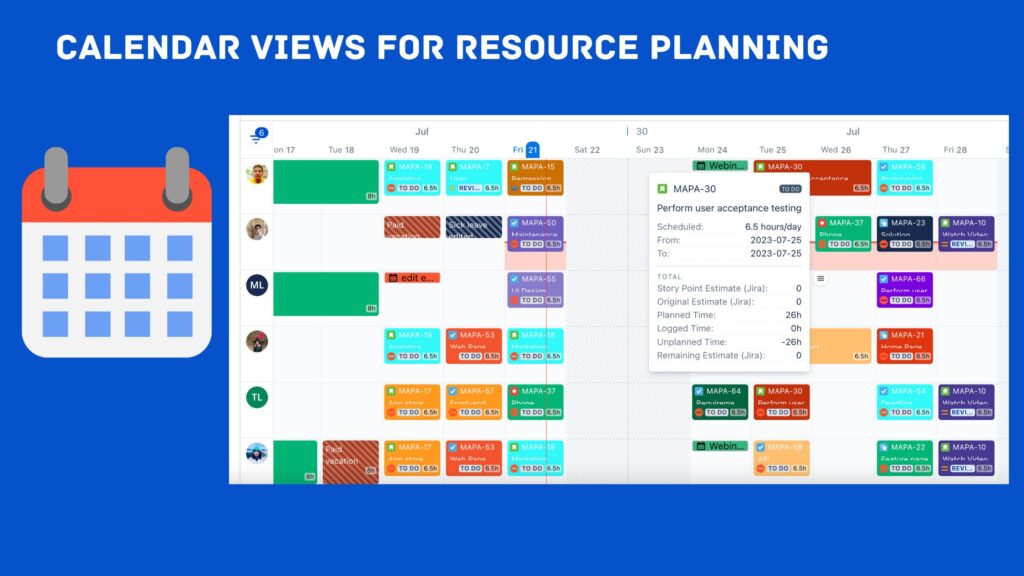
Picture this
A web developer tasked with building a multifaceted website but armed only with a list of features and no sitemap. Deciphering the flow, sequence, or interrelation of pages would be incredibly taxing. This is the precise scenario in project management without the aid of a visual tool like a calendar view, rendering resource management significantly more complex.
Visual Clarity
In the realm of web development, a calendar view is analogous to a sitemap. It showcases a structured visual of the entire project trajectory. You can swiftly discern which resources are tethered to specific tasks and the chronological distribution over the project’s lifecycle. Just as a sitemap illustrates the flow from the homepage to a contact form, a calendar view delineates resource delegation.
Streamlined Scheduling
Trying to sequence web pages without a sitemap is like navigating without a compass. Using a calendar view, tasks are scheduled with finesse, sidestepping overlaps, or glaring voids. This ensures that a homepage isn’t going live while its linked service page is still under construction.
Easier Adjustments
In web development, bugs or unexpected hiccups are par for the course. But with a clear roadmap, like a calendar view, adjustments become less of a jigsaw puzzle. If a feature release is postponed or a developer is momentarily unavailable, tasks can be promptly realigned, keeping the project’s momentum unbroken.
Efficient Monitoring
Mirroring the vigilant checks in the development server to ensure every element functions seamlessly, a calendar view accords project managers the optics to track task progression and resource allocation. At a glance, they can detect anomalies, like a task overstretching its deadline or a dormant resource.
Enhanced Collaboration
Just as developers and designers collaborate on a staging site to understand flow and functionality, a calendar view becomes a communal platform. Team members can sync their responsibilities, discern task interdependencies, and foster a collaborative synergy.
In the multifaceted world of resource planning, the calendar view emerges as the architectural blueprint. It meticulously details every task, every dependency, and every milestone. Converting an intricate chore of resource allocation into a visual storyboard ensures a rhythmic cadence in project execution.
How to create a resource plan
Building a resource plan for web or app development is a lot like designing a new digital platform. Just as a designer begins with a vision of the end user’s experience, a project manager starts with an understanding of the project’s objectives. Here’s how the blueprint unfolds:
Blueprint of the Platform (Project Scope)
Before coding a single line or designing a pixel, you need to grasp the entirety of the project. What’s the goal of the website or app? What features will it have? What are the expected milestones?
Toolbox Assembly (Resources)
Just as a designer chooses the right software and tools for their vision, list out all resources available. This could include developers, designers, software licenses, testing environments, or budgets.
Assign Features (Task Allocation)
Not every developer or designer works on all aspects of the project. Distribute specific tasks or features among your team based on their expertise, availability, and project requirements.
Set Milestones (Scheduling)
A website or app has a developmental flow, starting from wireframes, moving to design, then to coding, and finally to testing. Schedule each phase, ensuring that every resource is allocated appropriately without burnouts or prolonged idleness.
Beta Testing (Review and Adjust)
Before the final launch, a website or app undergoes rigorous testing, refining each component. Once your initial resource plan is in place, review and adjust. Are some resources underutilized while others are overwhelmed? Are there any bottlenecks? Fine-tune as needed.
Launch (Execution)
With the plan in place and testing done, it’s time to launch the website or app. With a well-drafted resource plan, you can steer your team and tools effectively toward a successful project completion.
Post-Launch Analysis (Continuous Monitoring and Adjusting)
Just as websites or apps require continuous updates and monitoring post-launch, stay vigilant with your resource utilization and task progress. Adapt and adjust to feedback, technical hitches, or unexpected challenges, ensuring that the project remains aligned with the initial vision and user expectations.
Building a resource plan for web or app development requires meticulous planning, clarity, and adaptability. With a carefully structured and executed plan, your web or app project is poised to stand out, much like a trending digital platform in the vast virtual realm.
5 key Features of an agile resource planning tool
Here’s a deep dive into what constitutes an ideal agile resource planning tool:
1. Schedule Calendar View:
One of the primary hallmarks of an agile resource planning tool is the Schedule Calendar View. This feature acts as a visual dashboard, offering users a bird’s eye view of all the ongoing, upcoming, and past tasks or events. By visually representing the project timeline and the allocation of resources, it streamlines the scheduling process and aids in avoiding overlaps or gaps. Think of it as the heartbeat monitor of your project – each beat, each rhythm, and each pause, all depicted in one comprehensive view.
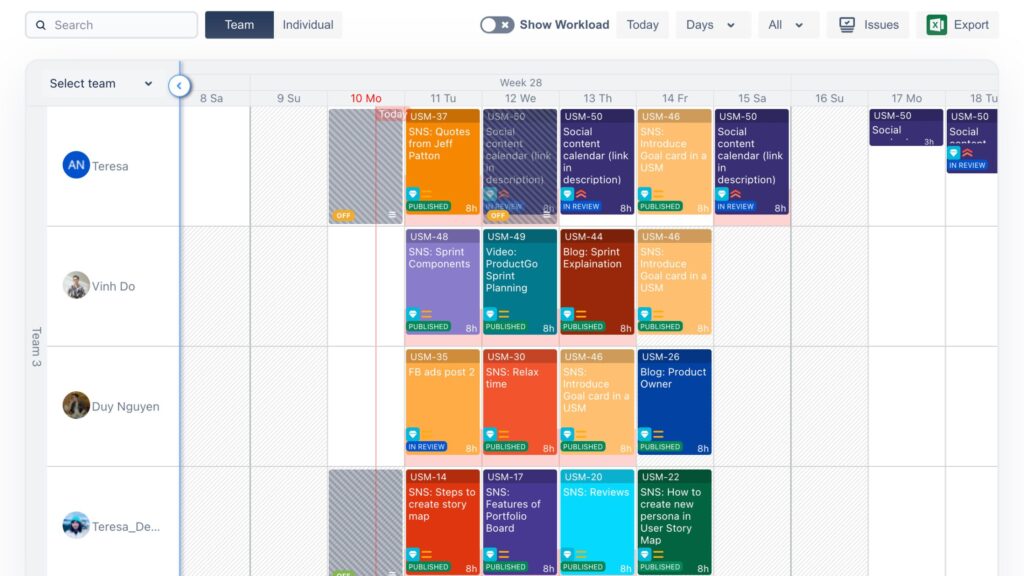
2. Time Tracking Trio
Time Tracking: It’s crucial for team members and managers to understand where time is being spent. This offers insights into the effort required for different tasks and helps in gauging productivity.
TimeLog: This feature acts as a logbook, capturing details about when a task was initiated, paused, or completed. It’s like a diary that offers retrospectives on how tasks have been approached and executed over time.
Timer: A real-time countdown or count-up that runs alongside a task. This creates a sense of accountability and urgency, ensuring that tasks are executed within their allocated time frames.
![]()
3. Timesheets:
Timesheets provide a structured breakdown of how time has been allocated and utilized across various tasks and projects. They act as a record for accountability and are crucial for billing, payroll, and even for performance reviews. In an agile setup, they offer a rapid recap of who did what and when, streamlining administrative and review processes.
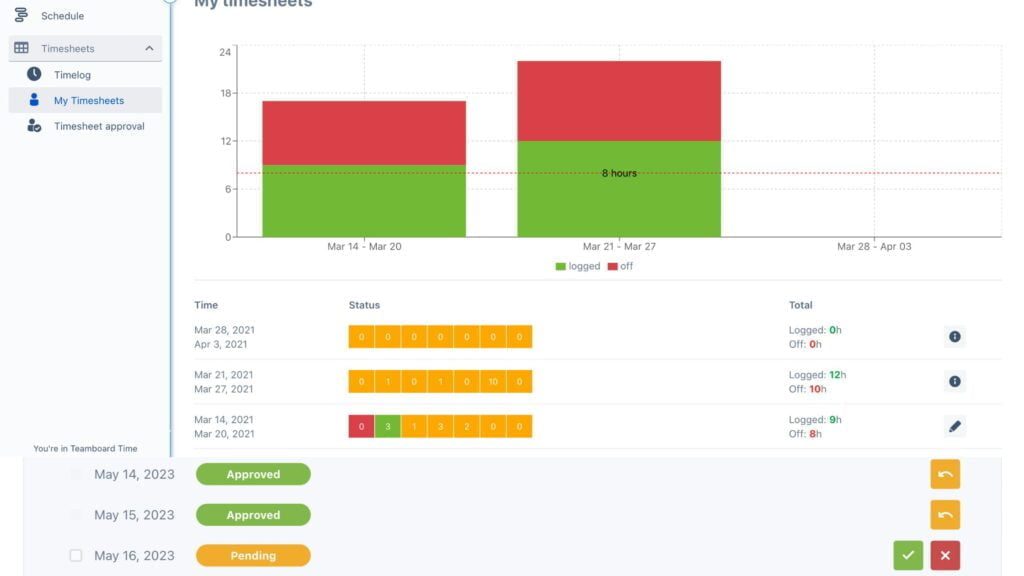
4. Analytics & Reports:
In the fast-paced world of agile, making informed decisions rapidly is key. The Analytics & Reports feature processes all the data from time tracking, logs, timesheets, and schedules to churn out insightful reports. These reports offer a deep dive into performance metrics, resource allocation efficiency, and project progress, enabling managers to make swift and informed decisions.
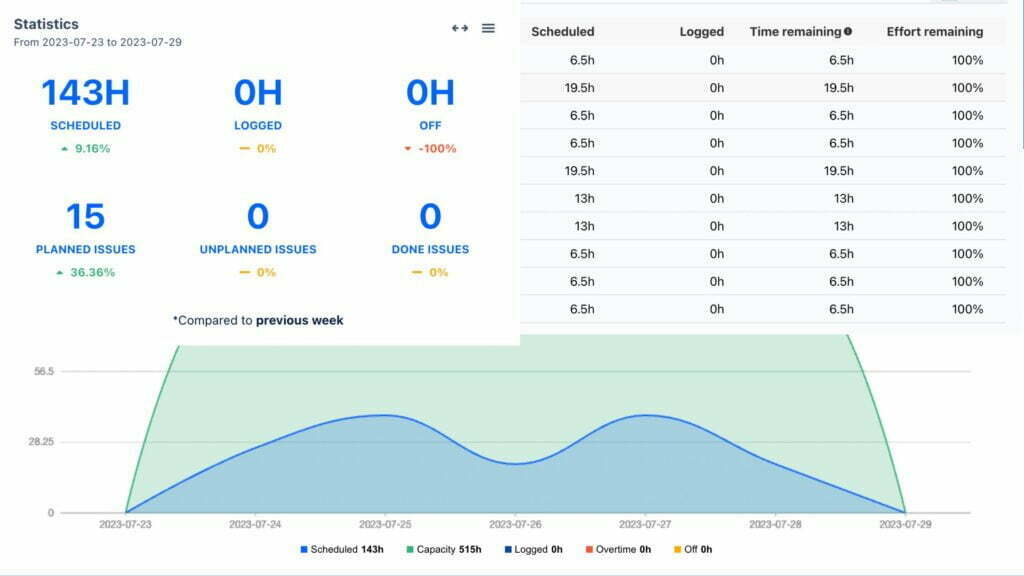
5. Integrative Flexibility:
While this wasn’t listed, it’s worth noting that an agile resource planning tool should seamlessly integrate with other tools in use, be it communication platforms, CRMs, or financial software. This integrative flexibility ensures that all components of a project are interlinked, offering a holistic approach to project management.
Recommended Tool: TeamBoard
When it comes to resource planning, TeamBoard ( TeamBoard ProScheduler for Jira | TeamBoard TimePlanner for Jira | TeamBoard for monday.com) stands out as an exceptional choice. Here’s why:
Multi-Platform Synchronization: TeamBoard effortlessly integrates with leading platforms such as Jira and monday.com. Plus, with an upcoming release for Salesforce, it’s poised to become a ubiquitous tool for teams across various ecosystems.
Streamlined Calendar View: For resource planning, visualization is paramount. TeamBoard offers a unified calendar view, simplifying resource allocation and tracking.
Agility at its Core: Built with the principles of agile project management, TeamBoard ensures that your projects remain flexible yet organized, catering to both planned tasks and unforeseen changes.
For teams striving to optimize their resource planning process, TeamBoard offers a compelling blend of versatility, intuitiveness, and innovation.
Or you can learn more Top 5 Jira Resource Planning Plugin
Resource Management – Resource Planning
Conclusion
Resource planning in project management isn’t just a task—it’s a pivotal strategy that can make or break a project’s success. As we’ve journeyed through its significance, the pitfalls of neglecting it, and the marvels of modern tools like TeamBoard, it’s evident that the right approach paired with the right tools can transform the project landscape.
TeamBoard, with its intuitive calendar views and seamless integration capabilities, isn’t just another tool in the arsenal, it’s a game-changer. As we step into an era where agility, adaptability, and efficiency are at the forefront, equipping ourselves with tools tailored for excellence becomes indispensable. Whether you’re an experienced project manager or a team member eager to optimize workflow, embracing agile resource planning is the key to navigating the intricate world of projects with finesse. As always, the goal is not just to plan but to plan smartly—and with the right tools at hand, the path to project success becomes clearer and more attainable.



